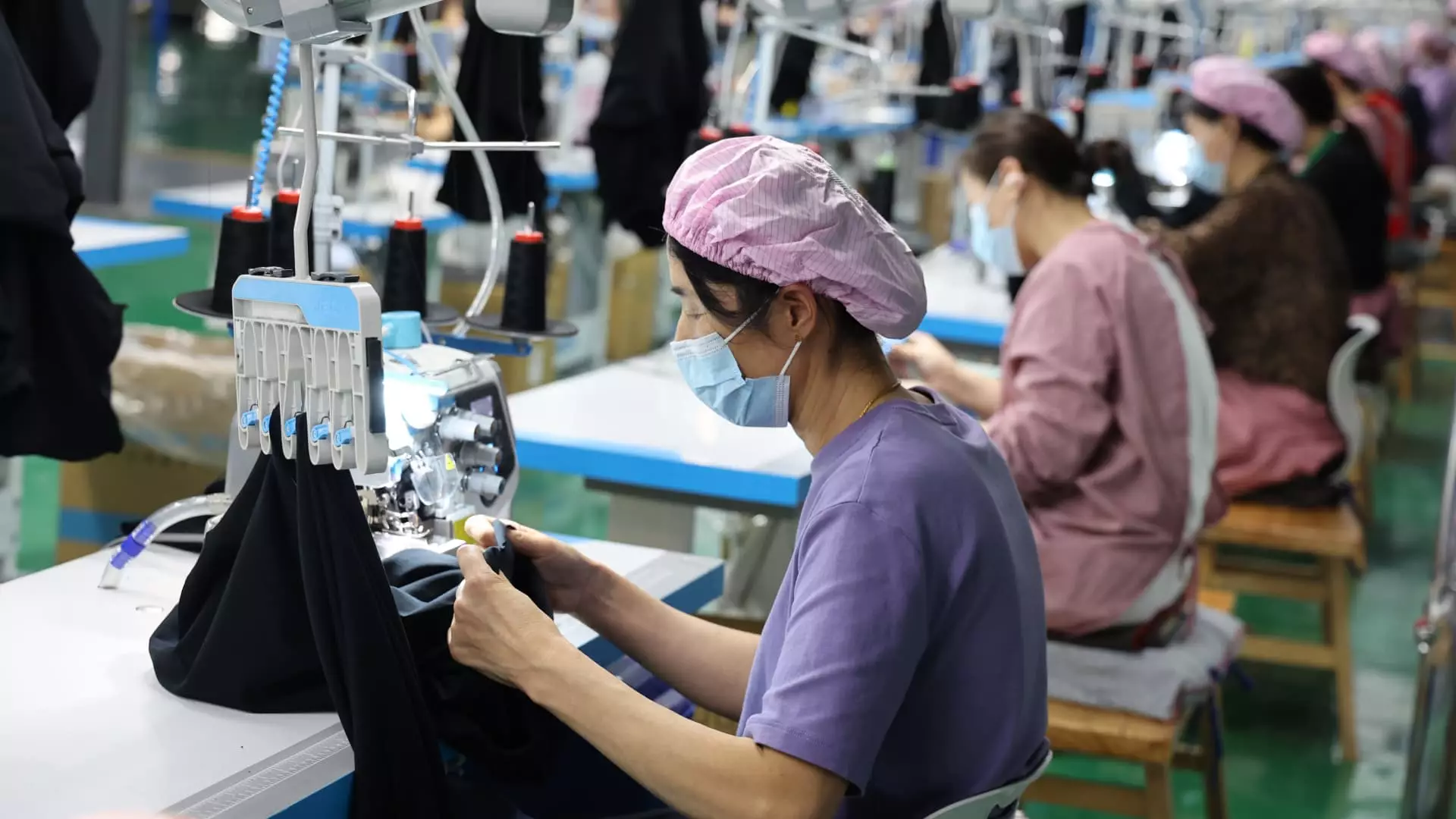The current trade landscape is shaking the foundations of China’s economy, revealing distressing realities about the nation’s manufacturing sector. As U.S. tariffs on Chinese goods continue to proliferate, businesses are feeling the pressure, resulting in dramatic shifts that could define the future of both economies. The analytical look at this predicament reveals the harsh truths that must be faced by Chinese manufacturers and their U.S. counterparts.
Production Pauses: A Ticking Time Bomb
The sounds of idle machinery are becoming common in factories that once hummed with productivity. Reports indicate that many manufacturers in China, particularly those associated with the export market, are hitting the brakes on production. Cameron Johnson from Tidalwave Solutions highlighted that factories producing toys, sporting goods, and low-cost merchandise have been particularly hard-hit, calling the situation a potential precursor to widespread economic distress. The stark reality is that these shutdowns aren’t limited to just a handful of businesses; they are indicative of a larger trend that threatens the livelihood of millions.
With estimates suggesting that 10 to 20 million workers are involved in U.S.-bound exports, the implications of these production halts are staggering. Workers are being sent home, and the once-bustling hubs of Yiwu and Dongguan may soon reflect a ghost town atmosphere. How can a nation that prides itself on its export prowess allow itself to fall into such despair? Reactionary measures like tariff reductions are being hoped for, but hope is not a strategy, especially when livelihoods hang in the balance.
Small Businesses: The Canaries in the Coal Mine
The reality for small businesses amidst the tariff upheaval is even bleaker. Ash Monga, CEO of Imex Sourcing Services, candidly pointed out that the impact of doubled tariffs is “way bigger” than that of the Covid-19 pandemic. Smaller enterprises, often with limited resources, are teetering on the brink of collapse. The abrupt disruption in trade has sent ripples through the entire market, with some firms left scrambling for survival.
The emergence of initiatives like Monga’s “Tariff Help” website indicates a growing recognition of the issue, but can digital solutions truly rectify something as fundamentally disruptive as global trade mismatches? As small businesses fight to pivot, their struggle serves as a grim reminder of the broader ramifications of escalating tensions between two major economies.
Markets in Flux: A New Brand of Selling
As despair turns to necessity, creativity often blooms. Talented innovators are looking inward as they seek to salvage their businesses, experimenting with unconventional sales tactics. Woodswool, the athleticwear manufacturer, is a case in point. By rushing to adopt livestreaming commerce, they managed to generate some sales amidst a sea of lost U.S. orders. But how effective can these short-term tactics be when they’re merely addressing symptoms rather than underlying causes?
China’s tech giants are stepping up to help manufacturers, with platforms like Baidu offering resources for companies trying to break into the domestic market. However, the question arises: is this a sustainable long-term solution? Shifting focus to local markets may temporarily alleviate the pressure, but can companies take root in a vastly different consumer ecosystem? The fundamental question of adaptability looms large as these brands diversify their strategies.
Changing Trade Dynamics: A Global Tug-of-War
The ongoing U.S.-China tariff saga has altered the global trade landscape in unexpected ways, compelling many to look beyond the traditional partners. Reports of Chinese companies exploring opportunities in places like Brazil and Ghana signify a shift away from historically reliable trade routes. It’s remarkable yet disheartening to see how geopolitical issues can underscore the fragility of economic partnerships; previously steady import-export dynamics are now crumbling.
Nonetheless, as Lius Xu’s e-commerce company’s endeavors in Brazil indicate, new opportunities are emerging. The fact remains that while some businesses may thrive under these conditions, the majority still suffer from the fallout. This dichotomy exemplifies the increasingly uncertain stakes involved in international trade and presents challenges that will persist long after the current tariff war fades.
Consumer Sentiment: Fatigue and Resilience
As the Chinese manufacturing sector seeks to adapt, the consumer sentiment in both the domestic market and beyond cannot be ignored. Ashley Dudarenok, a marketing consultant, has pointed out growing fatigue among Chinese consumers bombarded with appeals from manufacturers seeking to rally support. This growing disinterest signifies a critical point: how many times can consumers be expected to respond to the same pitch as companies pivot to save their operations?
The reality is palpable: diversifying markets may not equate to guaranteed success. The rise in competition among local brands emphasizes the need for innovation that resonates with consumers. As manufacturers abandon aspirations of exporting to the U.S. in favor of markets where their products might not be as readily accepted, the complexities of market saturation mix uneasily with desperation, resulting in a potential recipe for disaster rather than an opportunity for growth.
Our world is experiencing a redefinition of trade relationships, dictated by a contentious geopolitical climate. The impact is not only felt by businesses but also reverberates through the fabric of society. The necessity for reflection and a long-term vision amidst the upheaval is urgent; otherwise, we may witness a steady decline rather than a resurgence. The path before us is filled with hurdles, and only thoughtful, innovative navigation will allow us to emerge unscathed.

